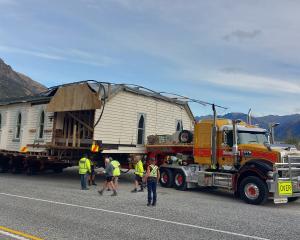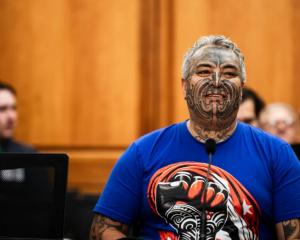The Government is considering mandatory QR scanning in "high-risk" locations such as bars and restaurants, Prime Minister Jacinda Ardern says.
Cabinet has commissioned advice on the move, after daily scans fell from a high of 2 million every day at the height of the pandemic in New Zealand to a low of just over 400,000.
Over time, requiring people to scan would become part of every day life, Ardern said at today's post-Cabinet press briefing, much like showing ID in a bar.
The Prime Minister said that the Government was also considering mandating mask-wearing at Levels 2 and above at certain high-risk locations.
Ardern said the last week has seen Covid cause significant disruption in New Zealand and it was time to review our "toolbox".
Asked why mandated scanning had not already been put in place, Ardern said the hope had been that people would scan.
She said the delay in putting mandated scanning in place was around the difficulty in enforcement.
Cabinet met today after the Government decided yesterday to extend alert level 2 for Wellington and pause quarantine-free travel with Australia amid rising case numbers fuelled by the highly infectious Delta variant.
Cabinet is also meeting tomorrow ahead of any further decisions around changes to Wellington alert levels and the travel pause.
Calls to review alert levels
The Government has been facing mounting pressure to review its alert level system, which is well over a year old and was compiled when much less was known about the virus.
Experts say with the new Delta variant, which is far more transmissable and deadly than the original, new measures should be brought in to contain any future outbreak.
For example, the Sydney outbreak highlighted that aerosol transmission was much more common than initially thought, raising the importance of mask-wearing in crowded areas.
Public health experts including Professor Michael Baker say an alert level system that reflected this would include mandatory QR scanning at high-risk places - like cafes, restaurants, bars, nightclubs, gyms, singing groups, and churches - and wider use of masks in indoor areas.
Specifically, they said there could be two separate "levels" that enforced mask-wearing – one that applied to people taking transport like flights, buses, trains, taxis and ride-shares, as well as to health facilities and rest homes; and another higher level that extended to all indoor settings, save for homes and primary schools.
The former level could be in place when Australia was seeing outbreaks and the bubble was open, while the latter could apply to a higher-risk situation like Wellington's current one.
Covid-19 Response Minister Chris Hipkins last week said while he was not ruling out any of these measures, but there were compliance issues to work through with compulsory scanning and mask-wearing.
He also said the Government preferred to keep the alert level systems as they were to avoid confusing the public, and to tweak them to specific outbreaks when necessary.
That's what happened for the August cluster last year, for example, when Auckland was put into alert level 2.5.
But critics say there was no evidence of that flexibility last week, when the presence of a possible super-spreader and several super-spreading events would have easily justified widespread use of indoor mask-wearing in Wellington.
Other measures recommended by experts included lowering the threshold for early suspension of travel from a particular Australian state or territory, ensuring all key workers had been vaccinated, and increasing financial support for people who needed to self-isolate.












